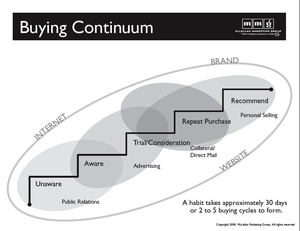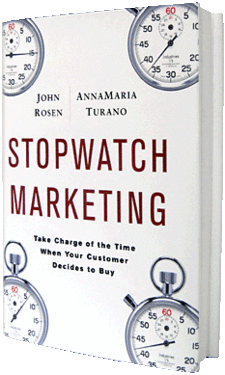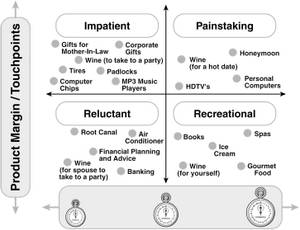The buying continuum
March 3, 2008
 Like all human behaviors, there are stages that lead up to someone actually buying something. We call it the Buying Continuum. This is a critical tool for understanding how to best communicate with your target audience.
Like all human behaviors, there are stages that lead up to someone actually buying something. We call it the Buying Continuum. This is a critical tool for understanding how to best communicate with your target audience.
The five stages of the Buying Continuum are: Unaware, Aware, Trial, Repeat and Recommend.
Unaware: This is the stage where your potential buyer has no idea that you even exist. They’ve never heard of you. Your goal is to get on their radar screen. Editorial coverage and blogging are great marketing tools to use with these buyers.
Aware: Now your potential buyer has an inkling of your company. You goal is to get them intrigued enough to care. Then, they’ll listen. Ads in targeted publications, your website and contests are effective at this stage.
Trial: Now, they’re on the cusp. They’re willing to give your service or product a try. You just need to give them that nudge. Direct mail, testimonials, and advertising will help get them to cross the line.
Repeat: They’ve tried you. You want them to do it again. At this stage, you want to let them know you won’t forget them and just chase new clients. This is a great stage to launch customer perks/clubs and specialized newsletters.
Referral: This is the Holy Grail for marketers. This is when your customers are out doing your job – selling your product or service. They are creating buzz, word of mouth marketing for you. You want to talk to them regularly. Make them feel like an insider.
Knowing where potential buyers are at in the Buying Continuum can help you decide which marketing tactics to use. Since you probably (hopefully) have potential buyers in all stages of the continuum – be sure you have the right media mix to reach them all.
Download your own, full-sized buying continuum chart, courtesy of MMG!
More








